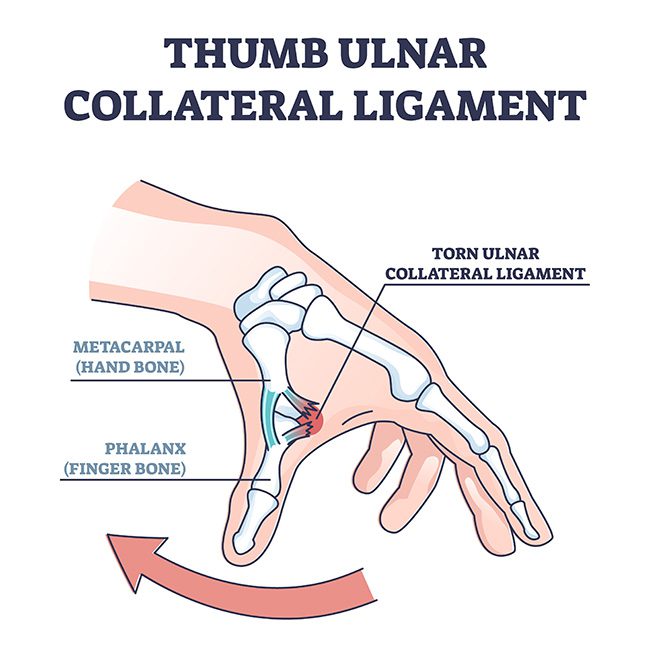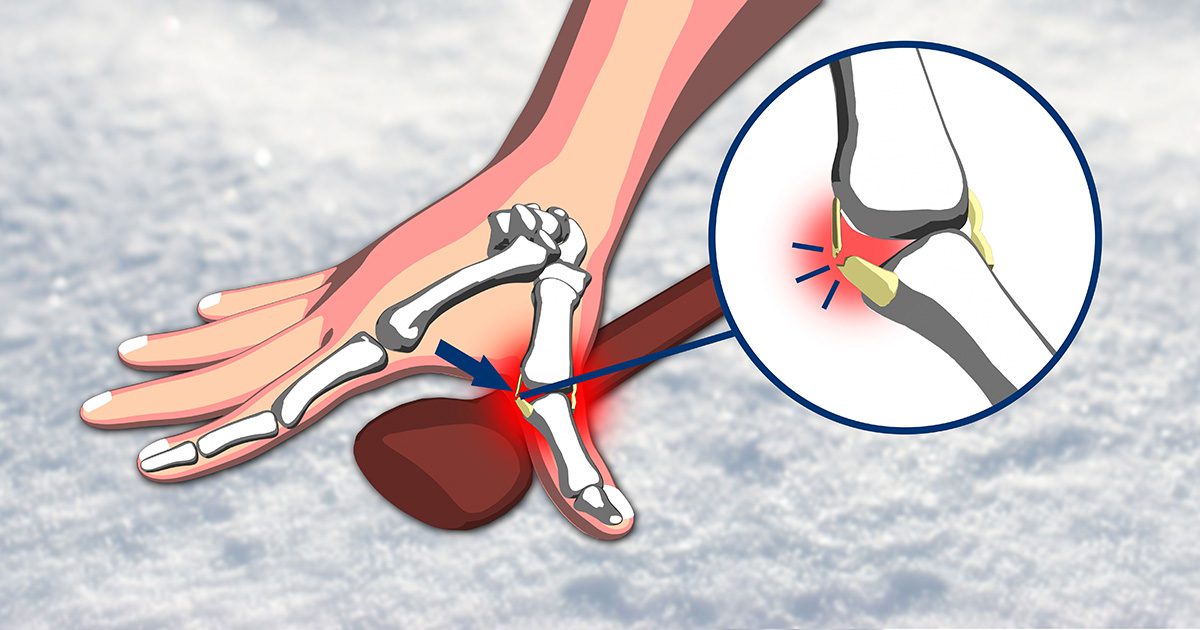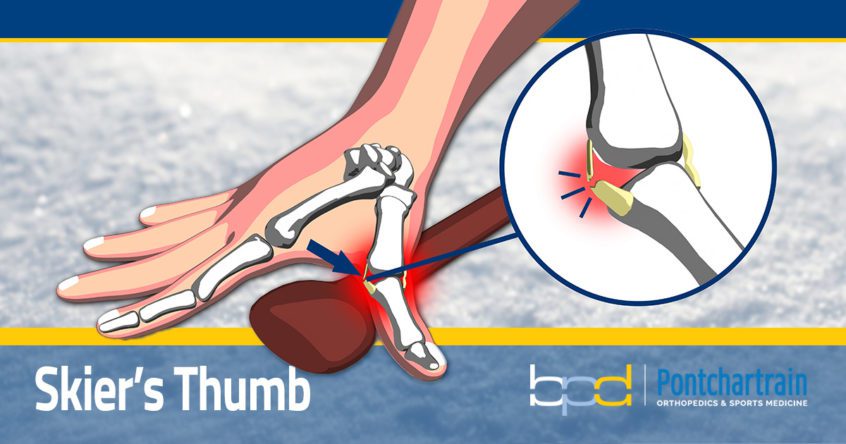What is a Skier's thumb?
What Causes the Injury?
Injury to the UCL typically occurs when the extended thumb is bent away (radially) from the hand, at the MCP joint. The injury is most likely caused by a fall onto an outstretched hand when the thumb is gripping something, like a ski pole, at the same time. Skier’s thumb may also be caused by gripping the steering wheel of a car during a collision.

How is Skier’s Thumb Diagnosed?
Patients with this problem complain of a loss of strength when pinching or gripping with the thumb, and a loss of range of motion. The thumb will be swollen, bruised, and painful. The most important decision in deciding which method of treatment is used is identifying whether the ligament is partly or completely torn.
Diagnosing the severity of the injury may be possible with a physical examination. If the thumb is too sore and swollen for the patient to tolerate a complete, physical exam, Dr. Donnelly may inject a local anesthetic around the thumb and examine the joint again. Mild to partial tears will be painful, but the thumb joint will be stable. If the UCL is completely torn, the thumb will be unstable.
An x-ray, ultrasound, or MRI examination may be used to determine if there is a fracture to the bone where the ligament is attached. Displacement of this fracture may indicate a complete tear.

Treatment Options
Treatment consists of splinting the thumb or a surgical repair of the ligament.
If the ligament is partially torn then a splint or cast is usually worn for six weeks. After removal a program of hand therapy exercises is used to restore strength and mobility.
If the UCL is torn and displaced into a position where proper healing may not be possible (a Stener lesion), surgery may be necessary. Surgical techniques include UCL repair with InternalBrace™ ligament augmentation. Dr. Donnelly may also use the WALANT method, a relatively new technique of performing certain surgeries without the need of general anesthetics.
If there is a fracture component, as a pro athlete, Dr. Donnelly may also utilize a bone-growth stimulator. This is something typically only employed in cases of delayed or poorly healing bone, but could help limit down time.
To accelerate healing, Dr. Donnelly can treat the surgical site with platelet-rich plasma. In this regenerative therapy, the patient’s own blood is spun through a centrifuge to isolate “growth factors,” which are then injected back into the body. Following surgery, a similar period of splinting and physical therapy will be required.

